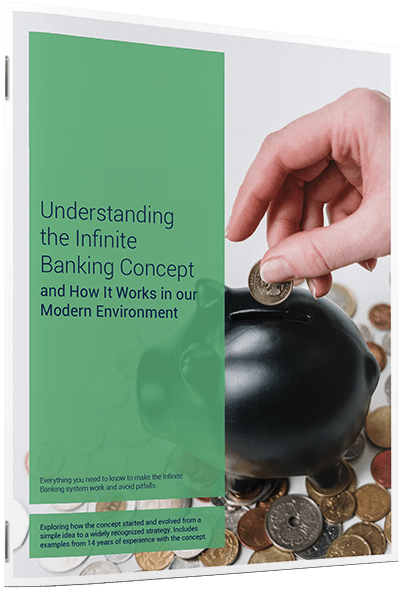702-660-7000
702-660-7000

Sinking funds! Ever wondered what they are? They can be your ultimate saving hack for any big purchase.
Imagine you’re eyeing a trip to the Maldives, dreaming of a new couch, or planning to buy a car—sinking funds are your ticket to paying in cash and steering clear of that dreaded buyer’s remorse.
Now, let’s get into the nuts and bolts of sinking funds and walk through setting one up.
Think of a sinking fund as a smart saving strategy, where you stash away a bit of cash each month.
Here’s the deal with sinking funds: you set aside a certain amount every month for something special you’re planning down the line. Month by month you’ll build up your stash in a manageable way and then you’ll have that lump sum when you need it.
Sinking funds are a game-changer for those costs that just don’t fit into a single month’s budget, like:
You get the idea. You can set up a sinking fund for any big dream, goal, or expense on the horizon. By staying consistent month-by-month the funds will accumulate and then one day, Presto! You’ll have the lump sum to make it happen.
Sinking funds and savings accounts might seem like the same thing, but they’ve got different purposes. A savings account is a place for money to sit…a sinking fund is your clever plan for how you stash away that cash.
Imagine this: you’re saving for a new car, a chill vacation, those sweet anniversary gifts, your kid’s summer camp, and the festive Christmas presents—all in one big savings pot. Sounds like a juggling act, right? Before you know it, things might get a tad muddled.
Here’s a pro tip: rather than lumping all your cash into one giant savings pile, why not set up separate sinking funds for each of your goals? This way, you can keep a crystal-clear tally on your progress and know just how much you have available to work with for each of your plans.
A sinking fund isn’t the same as your emergency fund – they’re like apples and oranges.
Your sinking fund is all about predictable expenses you see on the horizon…you know they’re coming, so you can plan and save accordingly.
On the flip side, your emergency fund is a financial parachute for those “oh no!” moments life throws your way. These are the curveballs you can’t predict or pencil into your calendar.
So, remember, your sinking fund is for the expenses you can anticipate, while your emergency fund is your buffer against the unforeseen twists and turns of life.
And hey, even though it might be tempting to raid your emergency stash for that killer rug sale or those must-have concert tickets, resist the urge! Keep that emergency fund locked down for true emergencies. For all the other stuff, that’s what your sinking funds are for.
Regardless of whether you love to spend or prefer to save, are a details person or more go-with-the-flow, sinking funds are a game-changer for everyone.
Here’s how a sinking fund can be your financial superhero:
By saving with purpose, fun buys will truly bring you joy, and the annoying expenses won’t throw you for a loop.

Understanding the Infinite Banking Concept and How It Works In Our Modern Environment 31-page eBook from McFie Insurance Order here>
So, you know what sinking funds are, how they work, and why they’ll help you. Here’s how to make one in four easy steps.
Step 1: Decide what you’re saving for.
What do you want? Car? Vacation? New designer clothes? Make educated choices that make the most sense for your financial situation. However, a sinking fund can be used for any type of purchase. As long as you have the money, you are good to go.
Step 2: Decide where you’re going to store your sinking fund.
You might want to consider setting up a dedicated savings account for your sinking fund. Just be sure to pick an account that doesn’t require you to keep a minimum balance. You don’t want pesky monthly fees nibbling away at your savings.
Step 3: Decide how much you need to save.
To nail down how much to tuck away, take the total amount you’re aiming to spend and split it by how many months or weeks you’ve got until it’s time to buy.
Say you’re dreaming of a $2,000 getaway and summer’s just a three-month sprint away. You’ve got a tight three months to save up. This calls for a spot in your budget that nudges you to set aside roughly $660 each month until those summer vibes hit.
Step 4: Set up your sinking fund in the budget.
A sinking fund really kicks into gear when you lock it into your monthly budget. So, no matter if you’re a spreadsheet wizard, an app aficionado, or a pencil-and-paper traditionalist, make sure your sinking fund gets its own line in your budget!
Next, and this is SUPER important! Make sure the sinking fund doesn’t create an unbalanced budget! Use the 10-20-70 principle. 10% of your income is yours to keep. 20% of your income should go toward paying off debt (if you have debt). If you don’t have debt this money goes into the 10% category. 70% of your income should go towards lifestyle. This is food, rent, mortgage, gas, utilities…and yes, you guessed it, sinking funds!
Then, move that specified amount into your savings account each month and mark it off in your budget. Tip: Slap on a due date for that transfer if you find monthly reminders handy.
Stay the course, and before you know it, that dream on the horizon can be a reality!
Now that you’re clued into the wonders of sinking funds, you might be tempted to set one up for every little thing. But hold up—sometimes, there’s such a thing as too much of a good thing.
If you’re trying to keep a gazillion sinking funds afloat all at once, you might find yourself spread too thin, barely making a dent in any of them. After all, there’s a cap to how much you can, or should, stash away each month. Given your financial goals, it might be wiser to zero in on saving for one or two items as opposed to the whole nine yards.
If there’s something on the horizon you need to shell out for, or something you’re really hankering after, crunch those numbers. Figure out if you can chase after a few goals without stretching yourself too thin. And remember, the 10-20-70 principle…balance is key!
Why not take a step further and invest in both yourself and your future? While the examples we’ve discussed revolve around saving for specific purchases, there’s more you can do. Consider a sinking fund that incorporates whole life insurance, where instead of putting your sinking funds in a traditional savings account, you put them into life insurance which will turn your savings into a financial tool and allow you to access the funds for your sinking fund purchases at the same time.
Incorporating life insurance with the sinking fund method provides a significant advantage that no savings account can offer; guarantees and a death benefit. The guarantees of whole life insurance ensure your money will grow and be available for you when you want to use it. With the addition of a death benefit, you can rest assured knowing that if the unthinkable happens, your loved ones will be provided for financially…something a savings account cannot offer.
Allocating funds to a whole life insurance policy not only secures financial stability and adaptability for you but also ensures your loved ones have a safety net, making it a profound way to invest in your family’s future.
It’s incredible what a bit of savvy saving can do. Rather than diving into debt, you can plan ahead, stay up front, and build a solid financial future for your family.
To maximize your saving strategy, provide protection for those you love and gain access to the guarantees and stability available to you through participating whole life insurance, contact McFie Insurance 702-660-7000 or [email protected]. We can help you!